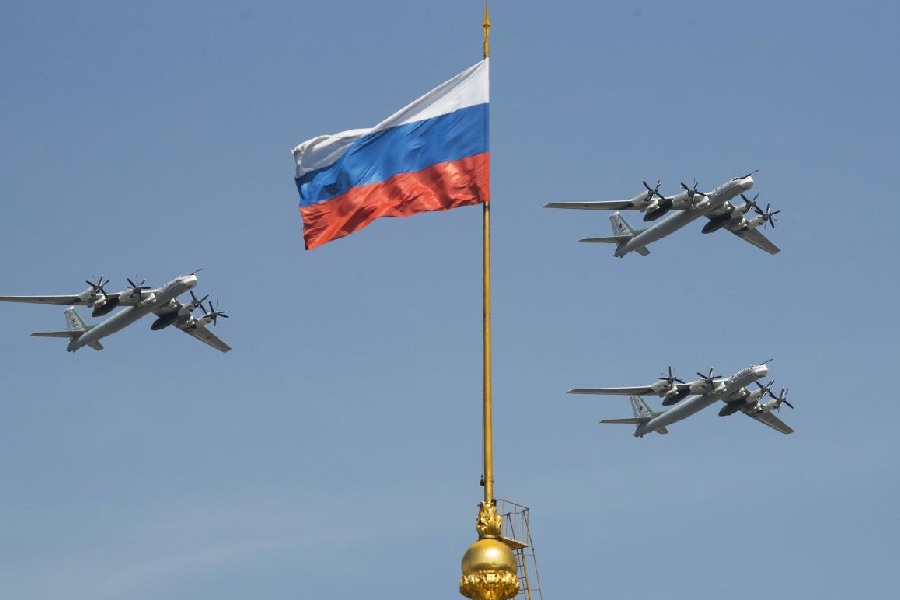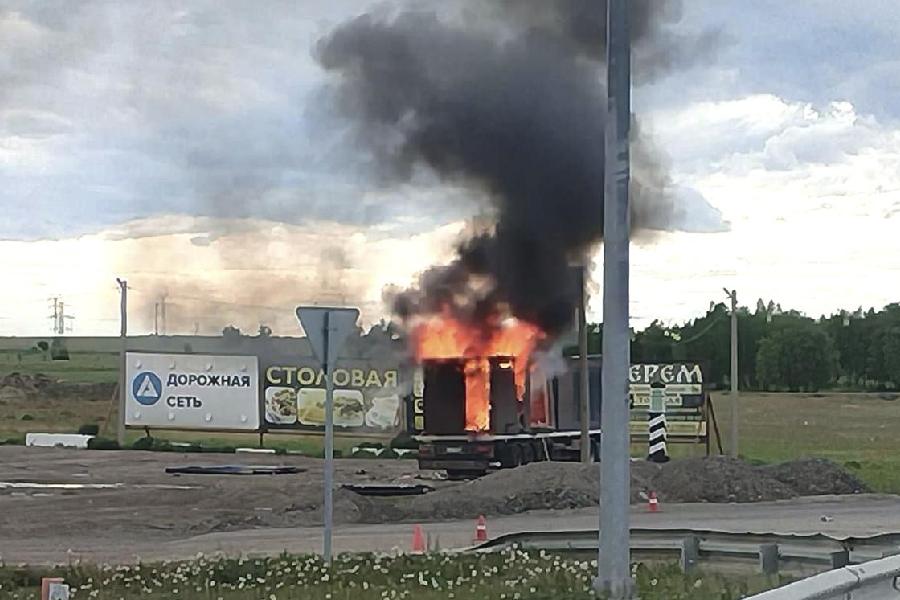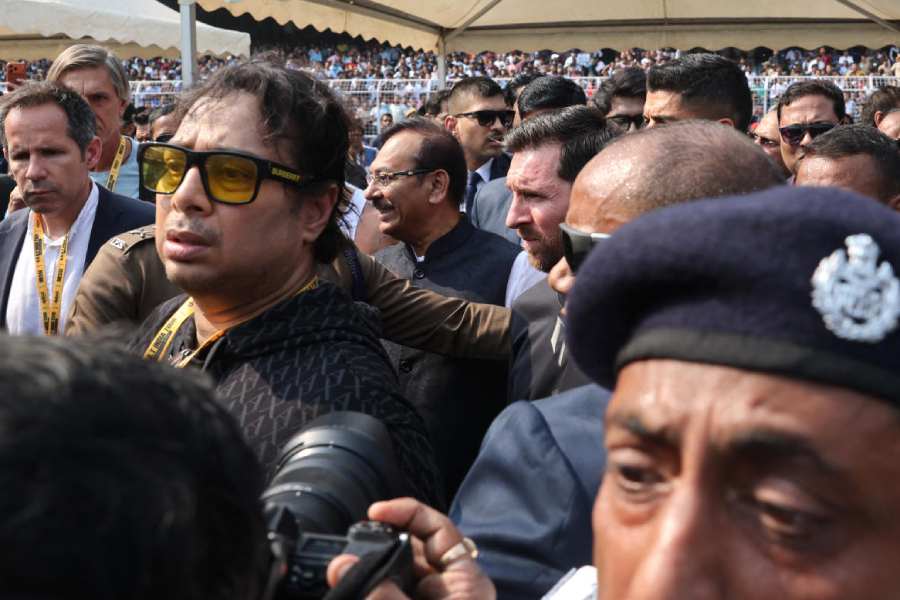For months, even as its forces were losing ground on the battlefield at home, the Ukrainian military was planning a stunning assault deep in Russian soil
On Sunday, remotely operated Ukrainian drones emerged from hiding inside Russia and began wreaking damage. When they were done, at least a dozen military aircraft lay in ruins. Strategic bombers in at least two airfields, Belaya and Olenya, were destroyed. In total, Ukraine targeted bases in five regions, according to Russia’s ministry of defence, which said attacks on three other locations had been repelled.
In launching an audacious drone attack on airfields and warplanes deep inside Russia, Ukraine is continuing to change the way wars will be conducted in the 21st century, according to US officials and military analysts.
American and European security officials said battle damage assessments were still coming in from the attacks, which took place on Sunday, but they estimated that as many as 20 Russian strategic aircraft may have been destroyed or severely damaged, dealing a serious blow to Russia’s long-range strike capabilities.
Officials said Russia’s losses included six Tu-95 and four TU-22M long-range strategic bombers, as well as A-50 warplanes, which are used to detect air defences and guided missiles.

Russian Tu-95 long-range strategic bombers at a military parade rehearsal in Moscow in 2018. AP
The attack, known as Operation Spider’s Web, hurt Moscow’s prized strategic capabilities. But just as significantly, it demonstrated Ukraine’s ability to strike nearly anywhere in Russia, and to destroy warplanes costing $100 million or more with drones with price tags as low as $600, according to one US defence official.
US officials said that Ukraine did not give the Donald Trump administration advance notice that forces with Ukraine’s Security Service, or SBU, were planning the attack, which targeted several air bases inside Russia, including one in Siberia.
In carrying out the strikes, Ukraine deployed agents far from its borders. For instance, the distance from Kyiv, the Ukrainian capital, to Belaya Air Base, one of the targets, is more than 4,800km. The drones were smuggled into Russia and packed inside wooden transport containers that had remote-controlled lids and then loaded onto trucks, the SBU said in a statement.
One US defence official compared the Ukrainian move to the Israeli operation last year that targeted the pagers of Hezbollah operatives in Lebanon. President Volodymyr Zelensky of Ukraine said on Monday that the drone strikes had “seriously weakened” Russia’s military operations.
“‘Spiderweb’ showed what modern war really looks like and why it’s so important to stay ahead with technology,” he wrote on social media.
Zelensky said the operation had been in the works for a year and a half.
American officials said they expected that Russia would mount a significant retaliation against Ukraine for the strikes. US intelligence has not, so far, identified what Russia is likely to strike, but officials believe Moscow could renew drone strikes on civilian targets, hit the energy grid or launch new waves of intermediate-range ballistic missiles.
Since Russian forces first invaded the country in February 2022, Ukraine has been retrofitting, or “MacGyvering”, inexpensive and readily available commercial drones into effective combat weapons that it has deployed on the battlefield. Ukrainian forces, using portable, shoulder-fired missiles called Javelins and Stingers, thwarted Russian tank convoys heading for Kyiv early in the conflict.
Ukraine put rocket systems on speedboats, increasing its naval warfare ability. Ukrainian forces destroyed Russian targets with slow-moving, Turkish-made attack drones and inexpensive plastic aircraft modified to drop grenades and other munitions. They targeted Russian ships in the Black Sea with Harpoon anti-ship missiles.
The US has assisted Ukrainian drone manufacturing, spending millions to build up their production capability and transferring some key technology.
But Ukraine “has now taken warfare to the next level”, said Evelyn Farkas, a former US deputy assistant secretary of defence for Russia, Ukraine and Eurasia.
“They are showing that you can now coordinate drones in order to achieve strategic effect,” Farkas, who is now the executive director of the McCain Institute, said in an interview.

A photo released by Irkutsk governor Igor Kobzev’s Telegram channel on Sunday shows a burning truck apparently used to release Ukrainian drones. AP/ PTI
Kateryna Stepanenko, a Russia analyst at the Institute for the Study of War, said the strikes showed that “nowhere in Russia is safe”, and that Ukraine is “shaping a new type of warfare”.
A senior US official said it was too soon to assess the full effect of the Ukrainian operation on Russia’s strategic bombers, in part because the Russians may be able to repair some of the targeted aircraft.
The official said that the drones did a “significant” amount of damage, but that the attack alone would not force Russia to scale back its offensive operations inside Ukraine. Keeping the operation secret is not surprising, officials said, because any leak of it beforehand would have endangered the forces carrying it out.
Ukraine has always been protective of its operational security; even more so in recent months since senior Trump administration national security officials inadvertently disclosed operational American strike plans in Signal group chats. There currently is no joint planning between the US and Ukraine on strikes in Russia.
US officials said their Ukrainian counterparts understood that Russia’s strategic bombers, which can carry nuclear weapons, were off limits for the US. The Ukrainians did not tell the Americans about their plans, knowing that the US would object.
A defence official in a Nato country in Europe said Ukraine’s strikes had already led to discussions as to whether allies needed to reassess their vulnerabilities. The official, like others interviewed for this article, was not authorised to discuss the security matter publicly and spoke on the condition of anonymity.
Samuel Bendett, an expert on Russian drones and other weapons at the Centre for Naval Analysis, said “we are slowly coming around” to threats posed against American military bases by drones.
“When it comes to large military bases that have a lot of aircraft parked on the tarmac, the lesson from the Ukrainian attack is that such a strike can potentially come at any moment,” Bendett said on Monday.
“At this point, it’s unlikely that our bases feature comprehensive protection against short-range threats.”
James Patton Rogers, a drone warfare expert at Cornell University, said that Western powers were particularly vulnerable at the many military bases they have in other countries, like the small, so-called lily pads in West Asia and Africa, where a range of extremist groups and other ground conditions make it nearly impossible to issue a standard kind of protection.
That was the case in the deaths in 2024 of three US Army Reserve soldiers at a remote desert base in Jordan, near the Syrian border, known as Tower 22, where Rogers said an Iraqi attack drone appeared to have shadowed an American drone as it prepared to land, and then struck.

A Ukrainian soldier attaches a shell to a drone at his frontline position in Kostiantynivka. Ukraine has been retrofitting inexpensive and readily available commercial drones into effective combat weapons. Ukrainian Armed Forces/ Handout via Reuters
Some officials said Ukraine’s drone attacks could be viewed as a gift to the US. Senator Lindsey Graham, Republican of South Carolina, who has repeatedly argued that Ukraine is managing to harm the war capabilities of Russia — a US adversary — said on social media on Sunday that “the ever-resourceful Ukraine used creative drone warfare tactics to successfully attack Russian bombers and military assets”.
Ben Hodges, a former top US Army commander in Europe, said in an interview on Monday that “it’s safe to say that there has been a significant reduction in Russia’s capability to launch cruise missiles”.
But General Hodges and several other people said that Ukraine’s strikes should, at least, force the Trump administration to rethink its plans for a “golden dome” missile defence shield, which the US President unveiled last month.
The Pentagon is drawing up plans for the project. Administration officials say it will be a next-generation military system designed to guard against a variety of ballistic, hypersonic and cruise missiles deployed by adversaries such as Russia. But the missile shield as envisioned wouldn’t protect the US from the types of drones Ukraine used.
Ukraine’s attacks on Russian airfields show that the $175 billion that Trump wants to spend on the shield project “is a misapplication of resources”, said Alexander Vindman, a Ukrainian-born former US Army officer who served on the National Security Council in 2019.
New York Times News Service











